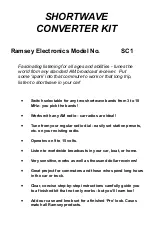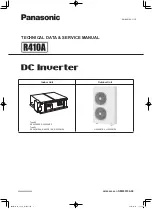
Danfoss CE labels the frequency converters in accordance with the low-voltage directive. This means that if the frequency converter is installed correctly,
we guarantee compliance with the low-voltage directive. Danfoss issues a declaration of conformity that confirms our CE labelling in accordance with the
low-voltage directive.
The CE label also applies to the EMC directive provided that the instructions for EMC-correct installation and filtering are followed. On this basis, a
declaration of conformity in accordance with the EMC directive is issued.
The Design Guide offers detailed instructions for installation to ensure EMC-correct installation. Furthermore, Danfoss specifies which our different prod-
ucts comply with.
Danfoss gladly provides other types of assistance that can help you obtain the best EMC result.
2.3.4 Compliance with EMC Directive 89/336/EEC
As mentioned, the frequency converter is mostly used by professionals of the trade as a complex component forming part of a larger appliance, system,
or installation. It must be noted that the responsibility for the final EMC properties of the appliance, system or installation rests with the installer. As an
aid to the installer, Danfoss has prepared EMC installation guidelines for the Power Drive system. The standards and test levels stated for Power Drive
systems are complied with, provided that the EMC-correct instructions for installation are followed, see the section
EMC Immunity
.
The frequency converter has been designed to meet the IEC/EN 60068-2-3 standard, EN 50178 pkt. 9.4.2.2 at 50°C.
A frequency converter contains a large number of mechanical and electronic components. All are to some extent vulnerable to environmental effects.
The frequency converter should not be installed in environments with airborne liquids, particles, or gases capable of affecting and
damaging the electronic components. Failure to take the necessary protective measures increases the risk of stoppages, thus reducing
the life of the frequency converter.
Liquids can be carried through the air and condense in the frequency converter and may cause corrosion of components and metal parts. Steam, oil, and
salt water may cause corrosion of components and metal parts. In such environments, use equipment with enclosure rating IP 54/55. As an extra
protection, coated printed circuit boards can be ordered as an option.
Airborne Particles such as dust may cause mechanical, electrical, or thermal failure in the frequency converter. A typical indicator of excessive levels of
airborne particles is dust particles around the frequency converter fan. In very dusty environments, use equipment with enclosure rating IP 54/55 or a
cabinet for IP 00/IP 20/TYPE 1 equipment.
In environments with high temperatures and humidity, corrosive gases such as sulphur, nitrogen, and chlorine compounds will cause chemical processes
on the frequency converter components.
Such chemical reactions will rapidly affect and damage the electronic components. In such environments, mount the equipment in a cabinet with fresh
air ventilation, keeping aggressive gases away from the frequency converter.
An extra protection in such areas is a coating of the printed circuit boards, which can be ordered as an option.
NB!
Mounting frequency converters in aggressive environments increases the risk of stoppages and considerably reduces the life of the
converter.
Before installing the frequency converter, check the ambient air for liquids, particles, and gases. This is done by observing existing installations in this
environment. Typical indicators of harmful airborne liquids are water or oil on metal parts, or corrosion of metal parts.
Excessive dust particle levels are often found on installation cabinets and existing electrical installations. One indicator of aggressive airborne gases is
blackening of copper rails and cable ends on existing installations.
2 Introduction to VLT AQUA Drive
VLT
®
AQUA Drive Design Guide
14
MG.20.N5.02 - VLT
®
is a registered Danfoss trademark
2















































